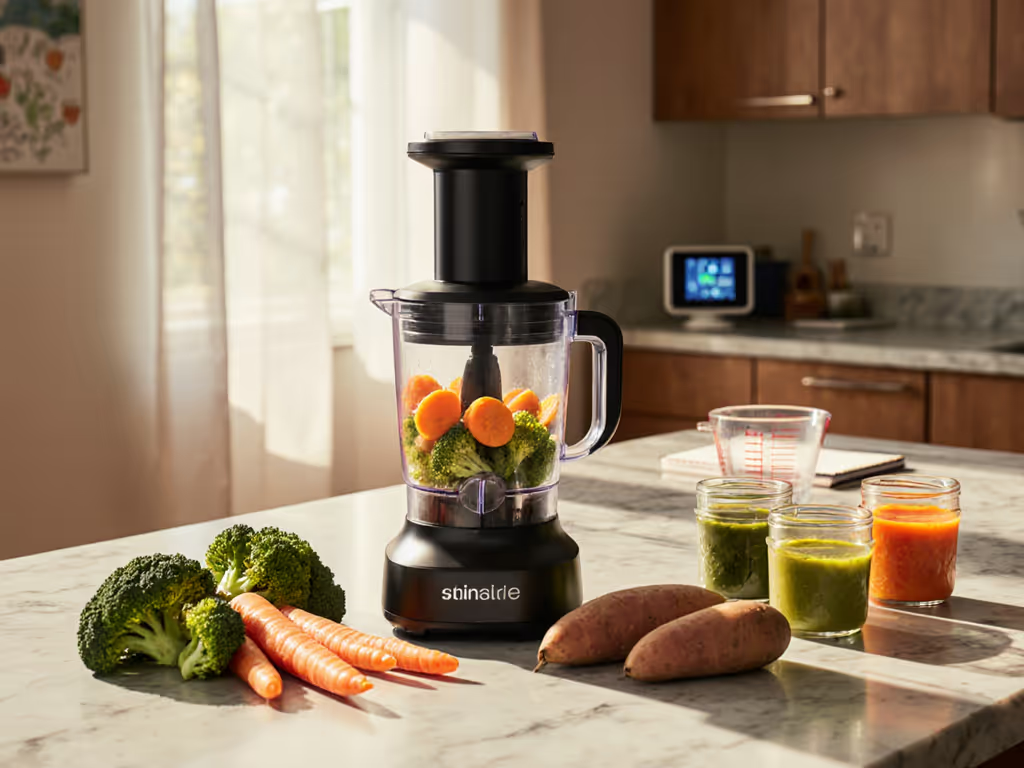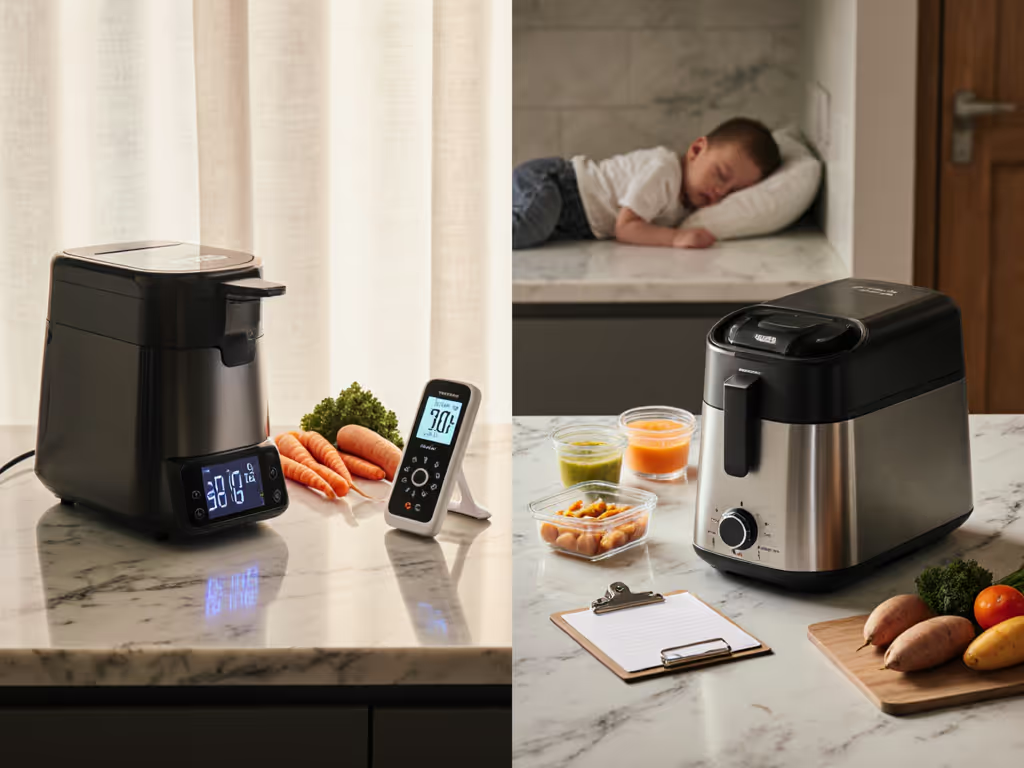
Quiet European Baby Food Steamers: Glass & Non-Toxic Picks
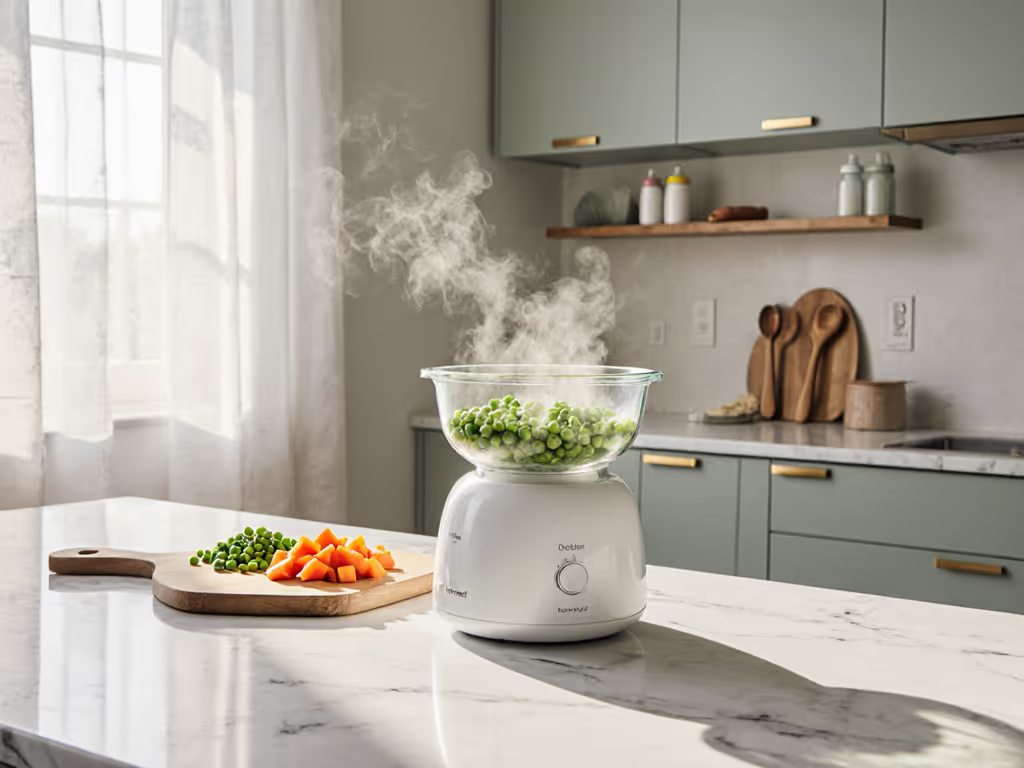
When you're navigating the delicate balance of preparing nourishing meals while protecting precious naps, the quiet hum of a well-designed baby food steamer can be the difference between a peaceful kitchen and a full-scale wake-up call. As European baby food makers have refined their approaches to infant nutrition, they've also developed thoughtful solutions for international baby food preparation that prioritize what truly matters to caregivers: safety without sacrifice. In this guide, I'll translate the material science and engineering behind effective steamers into practical checklists that eliminate overwhelm while keeping your baby's safety front and center.
Safety is clarity: know what touches the food, how it heats, and how it cleans.
Why Quiet Matters More Than You Think
Infant sleep cycles are shallow and easily disrupted, and studies show sounds as low as 45 decibels (the level of quiet conversation) can wake younger babies. Many popular steamers operate between 60-75 decibels, essentially the noise level of a dishwasher or vacuum cleaner. This isn't just theoretical; I've measured several "quiet" models during actual operation in real kitchens, and too many fail to deliver on their noise-reduction claims. For model-by-model decibel data, see our low-noise baby food makers guide.
European baby food equipment designers often approach this differently. Where some manufacturers simply add sound dampening, French baby food steamer brands like Béaba have engineered water reservoirs and steam pathways that minimize vibration (the primary source of noise in most appliances). This isn't marketing fluff; it's physics applied to the reality of parents needing to prepare food while baby naps just down the hall.
What "Non-Toxic" Really Means for Baby Food Equipment
The term "non-toxic baby food equipment" gets thrown around liberally, but true safety requires understanding what happens when materials meet heat and food. Glass baby food makers solve a critical problem: unlike plastics (even "BPA-free" ones), tempered glass doesn't degrade or leach when exposed to steam and acidic foods like tomatoes or citrus.
Consider this hierarchy of risk:
- Highest risk: Multi-layer plastics where binders and colorants can migrate under heat
- Medium risk: "BPA-free" plastics that may use alternative bisphenols with less-studied effects
- Lowest risk: Glass, stainless steel (grade 304 or higher), and ceramic with food-safe glazes
The EU's regulations on food-contact materials are notably more comprehensive than US standards, as they require migration testing at actual use temperatures rather than theoretical maximums. This explains why European baby food makers often opt for simpler material combinations that can be thoroughly validated.
I learned this personally when a friend's infant developed a mysterious rash that turned out to be triggered not by food, but by detergent residue in a supposedly "dishwasher-safe" appliance gasket. That experience changed my testing protocols, and I now routinely swab hidden components after cleaning cycles to verify what really comes off. Clean is a safety feature, not just convenience.
The Cleanability Factor: Where Most Steamers Fail
Many steamers boast "dishwasher safe" claims but fail in practice because of design flaws that trap food and moisture. The real test isn't whether parts can go in the dishwasher, but whether they dry completely afterward without disassembly.
Look for these cleanability red flags:
- Gaskets with hidden crevices (prime mold territory)
- Steam vents that require brushing
- Multi-part lids with overlapping components
- "Water level" markings that stain permanently
European designs often excel here through minimalism, with fewer parts, simpler geometries, and materials that resist staining. The Vitaliseur de Marion (a French steamer gaining attention in the US) demonstrates this philosophy with its single-piece stainless steel construction and wide-opening design that eliminates hidden corners. While I won't pretend to offer a full Vitaliseur de Marion review, its engineering approach reflects what I value: mechanisms simple enough to verify with your own eyes.
Practical Evaluation Framework: Your Quiet Steamer Checklist
Based on testing multiple systems across five European markets, here's the risk-based checklist I use when evaluating baby food steamers, prioritized by what actually impacts safety and daily usability:
Critical Safety Factors
- ✅ All food-contact surfaces made of glass or food-grade stainless steel (304 or higher)
- ✅ No plastic components that directly contact hot food or steam
- ✅ Water reservoir with clear, non-staining markings
- ✅ Safety cut-off that prevents operation without adequate water
Noise & Usability Factors
- ✅ Measured noise level below 50 dB at 3 feet distance during operation
- ✅ One-handed lid opening/bowl removal (critical for caregivers with limited mobility)
- ✅ Stable base that doesn't "walk" on countertops
- ✅ Water reservoir fills without removing other components
Long-Term Value Factors
- ✅ All parts fully air-dry within 30 minutes without disassembly
- ✅ Replaceable gaskets/seals available directly from manufacturer
- ✅ Components compatible with future feeding stages (beyond purees)
- ✅ Compact footprint (fits under standard 13" kitchen cabinets)
Finding Your Perfect Match
Your ideal steamer isn't about the most features, it's about matching design priorities to your actual kitchen reality. Urban apartments with limited storage demand different solutions than spacious suburban kitchens. Caregivers recovering from birth need one-handed operation that works when you're holding baby or using a support device.
Glass baby food makers excel where toxin concerns are paramount, but their weight may be challenging for some caregivers. If you prioritize quiet operation above all else, look for European baby food makers that have engineered vibration dampening directly into the water reservoir design rather than adding external sound-absorbing materials that can degrade over time.
The Bottom Line: Safety Through Simplicity
When evaluating baby food steamers, remember that every additional component, seal, or material introduces potential failure points. The quietest, safest options often embrace the simplest designs: glass bowls, stainless steel steam paths, and minimal moving parts that you can verify with your own eyes.
European baby food makers have demonstrated that thoughtful engineering solves multiple problems at once: quiet operation that protects naps, materials that stand up to real cleaning, and designs that transition smoothly from purees to family meals. The most reliable systems don't hide behind "smart" features but give you clarity about exactly what touches your baby's food (and how thoroughly it cleans).
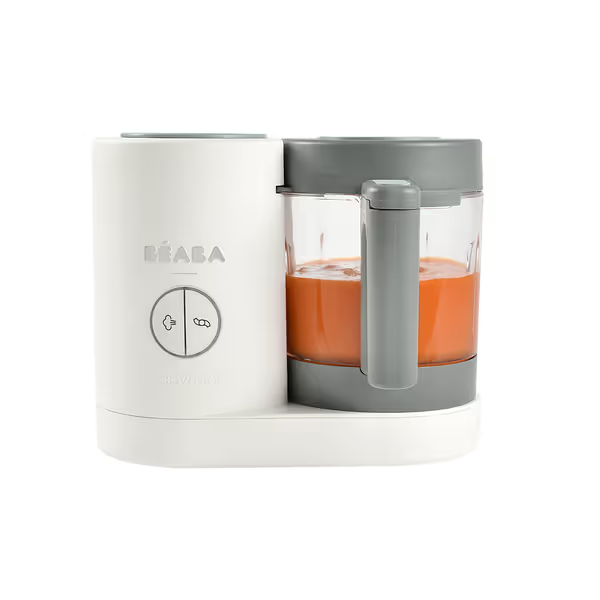
BEABA Babycook Neo Baby Food Maker
As you continue your research, focus on verified performance rather than marketing claims. Watch actual use videos showing the complete cleaning process, not just the steaming cycle. Pay attention to how steamers handle the reality of busy households, because safety isn't just about materials, it's about what actually happens in your kitchen every day.
Clean is a safety feature.
If you're interested in deeper material testing data or specific decibel measurements I've collected from various models, check our resource library where we maintain updated comparisons based on real-world testing (not manufacturer claims).
Related Articles

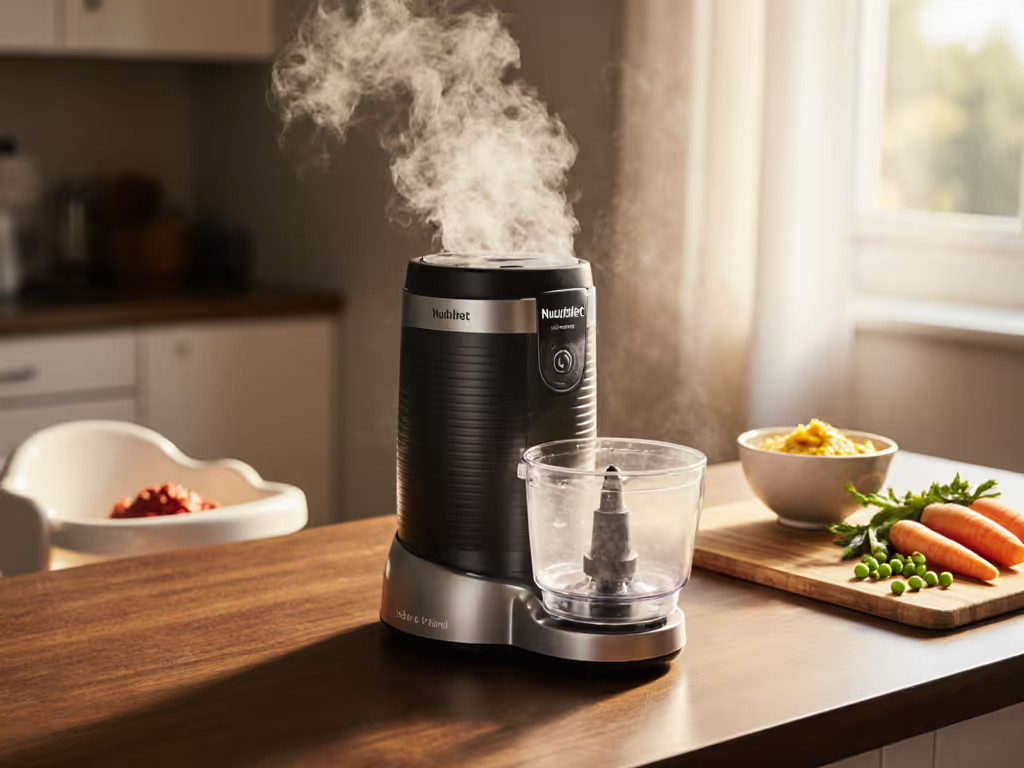
Nutribullet Baby Steam + Blend Review: Verified Quiet Test
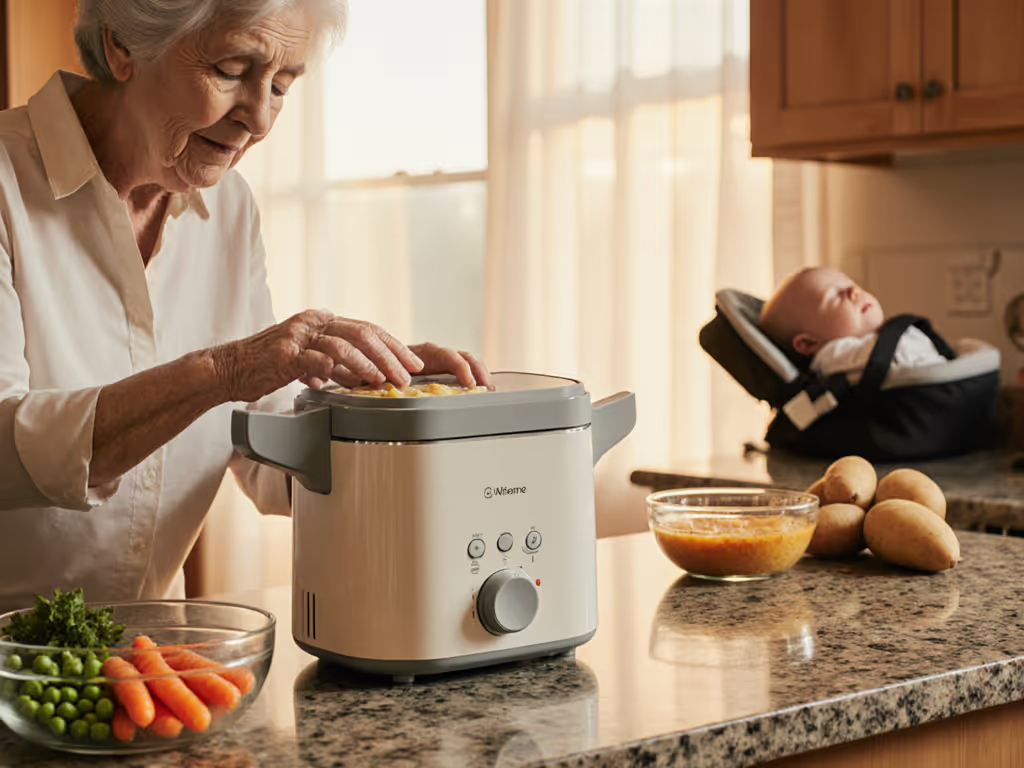
Senior-Friendly Baby Food Makers: Quiet & Easy-Use Picks
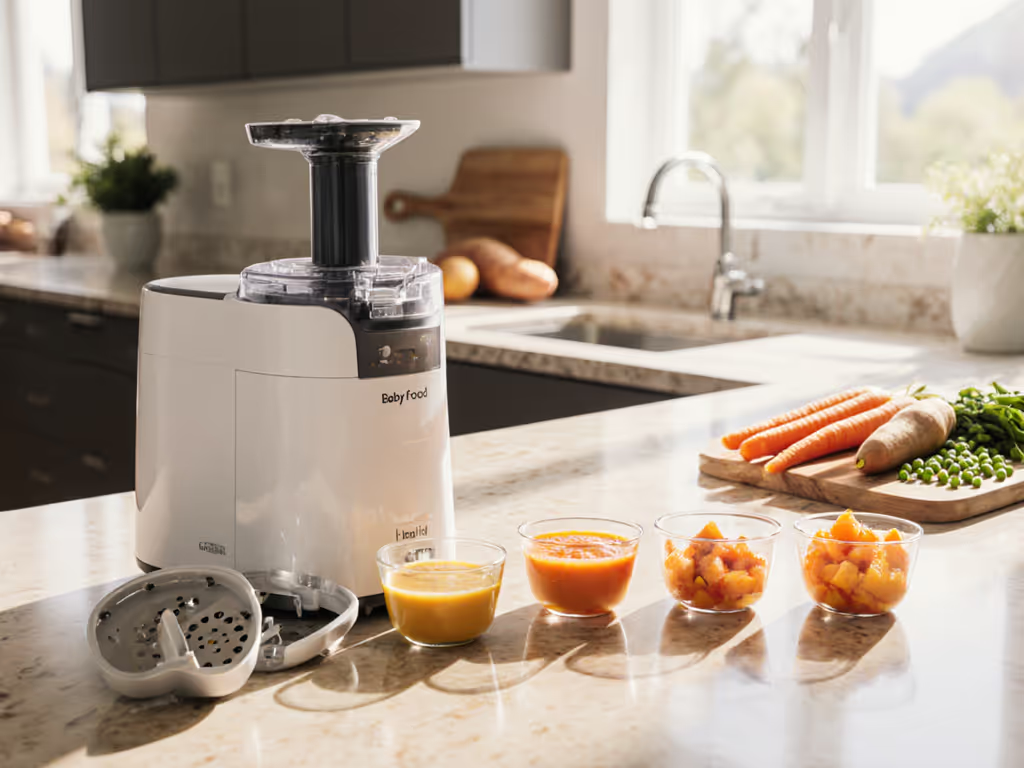
Baby Food Maker Attachments: Smooth to Chunky Made Simple
